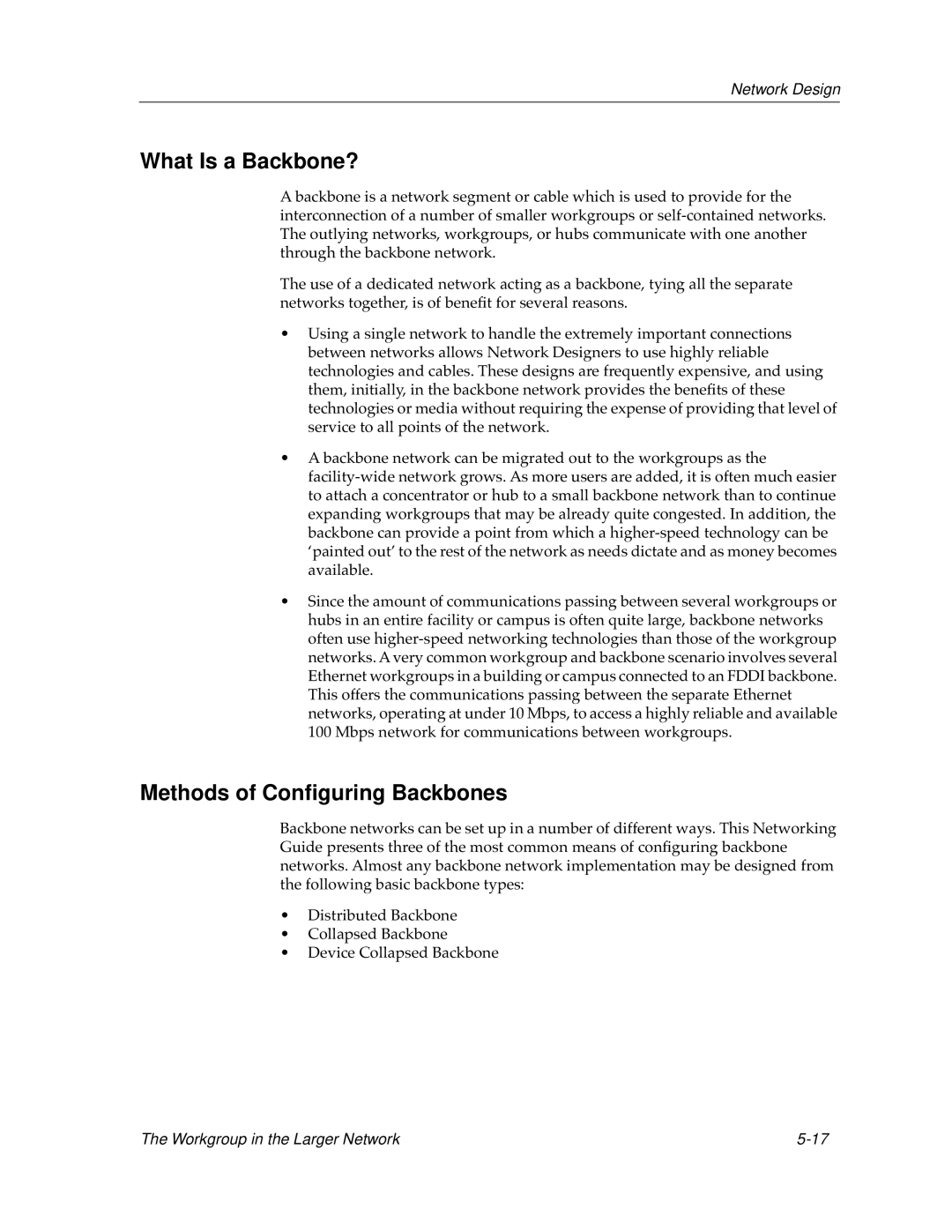Network Design
What Is a Backbone?
A backbone is a network segment or cable which is used to provide for the interconnection of a number of smaller workgroups or
The use of a dedicated network acting as a backbone, tying all the separate networks together, is of benefit for several reasons.
•Using a single network to handle the extremely important connections between networks allows Network Designers to use highly reliable technologies and cables. These designs are frequently expensive, and using them, initially, in the backbone network provides the benefits of these technologies or media without requiring the expense of providing that level of service to all points of the network.
•A backbone network can be migrated out to the workgroups as the
•Since the amount of communications passing between several workgroups or hubs in an entire facility or campus is often quite large, backbone networks often use
Methods of Configuring Backbones
Backbone networks can be set up in a number of different ways. This Networking Guide presents three of the most common means of configuring backbone networks. Almost any backbone network implementation may be designed from the following basic backbone types:
•Distributed Backbone
•Collapsed Backbone
•Device Collapsed Backbone
The Workgroup in the Larger Network |
